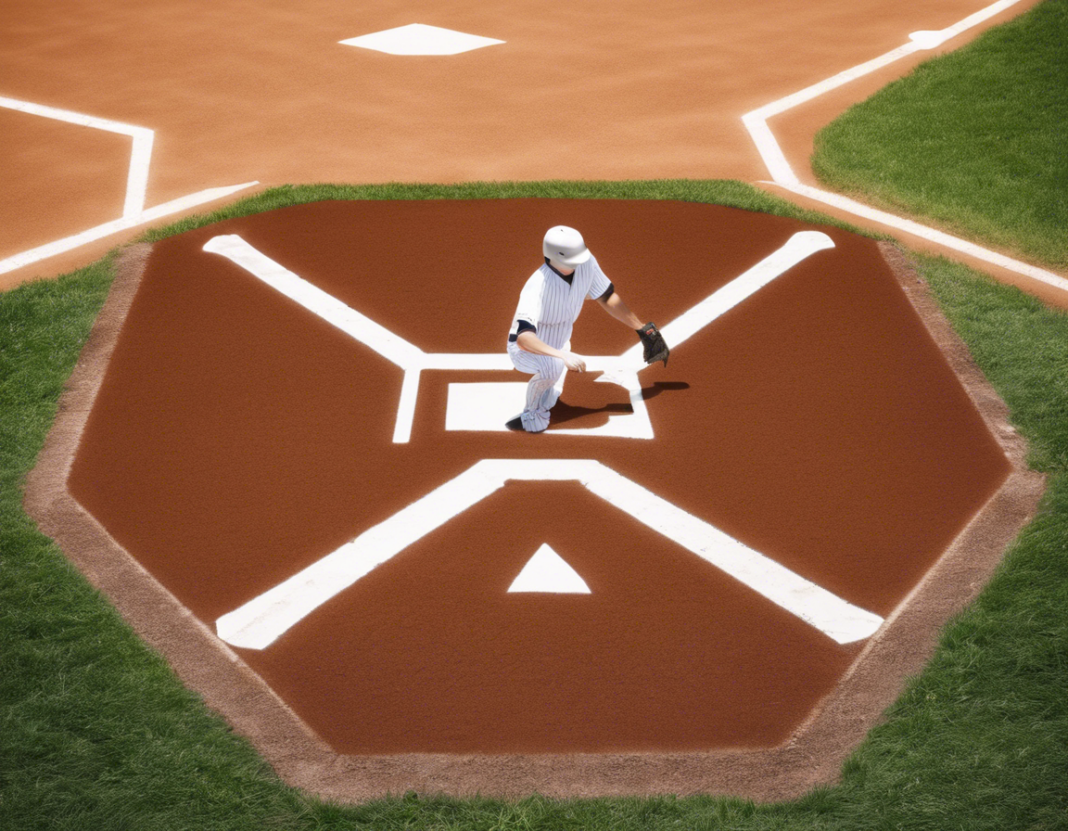As a key focal point in the game of baseball, defending home plate is a crucial aspect that can make or break a team’s success. Whether you are a catcher, infielder, or outfielder, understanding the ins and outs of defending home plate is essential for achieving victory on the diamond. In this comprehensive guide, we will delve into the various aspects of mastering baseball defense specifically centered around home plate.
Importance of Defending Home Plate
Defending home plate is essential in preventing the opposing team from scoring runs. As the final destination for base runners, home plate represents a critical junction where every run matters. A strong defense at home plate can stifle the opponent’s offense and provide the foundation for a successful game.
Positioning and Communication
Positioning is key when it comes to defending home plate. Catchers need to be positioned properly to receive throws from the outfield and infield, tag out runners attempting to score, and block the plate to prevent runs. Infielders and outfielders must also be in the right position to back up throws and assist in the event of overthrows or errors.
Communication is equally important. Clear and effective communication among players is essential to ensure that everyone is on the same page regarding responsibilities and potential plays at home plate. Non-verbal cues and signals can also play a significant role in coordinating defensive efforts.
Anticipating Plays and Reacting Quickly
Anticipation is a key trait that separates good defenders from great ones. Anticipating potential plays at home plate, such as a throw from the outfield or a bunt, can give defenders a split second advantage in reacting to the situation. Quick reactions, coupled with solid fundamentals, can often mean the difference between an out and a run scored.
Strategies for Defending Home Plate
1. Tag Plays vs. Force Plays
Understanding the difference between tag plays and force plays at home plate is crucial. In a tag play, the catcher must tag the baserunner with the ball before they touch home plate. In a force play, the catcher only needs to receive the ball and touch home plate before the baserunner reaches it.
2. Blocking the Plate
Blocking the plate is a technique used by catchers to prevent baserunners from scoring. By positioning their body in front of the plate, catchers can create a barrier that the baserunner must navigate around to touch home. Proper technique and timing are essential to execute this maneuver effectively and avoid collisions.
3. Backing Up Throws
Infielders and outfielders play a crucial role in backing up throws to home plate. By positioning themselves behind the catcher, they can retrieve overthrown balls and prevent baserunners from advancing further. Solid back up ensures that defensive plays at home plate are supported and any potential errors are minimized.
4. Relay Throws
Relay throws involve multiple fielders working together to quickly transfer the ball from the outfield to home plate. This strategy is often employed when a baserunner is attempting to score from second or third base. Efficient relay throws can cut down the baserunner and prevent runs from scoring.
5. Pitcher’s Role in Defending Home Plate
The pitcher plays a critical role in defending home plate by controlling the pace and location of the game. Pitchers must work in tandem with catchers to execute pitch sequences that keep baserunners in check and set up the defense for potential plays at home plate. Strategic pitching can disrupt the opponent’s offense and create opportunities for defensive success.
Key Fundamentals for Home Plate Defense
1. Footwork and Agility
Strong footwork and agility are essential for defenders at home plate. Catchers must be able to move quickly to field balls, tag baserunners, and block the plate effectively. Infielders and outfielders need to be able to react swiftly to potential plays and adjust their positioning as needed.
2. Arm Strength and Accuracy
Arm strength and accuracy are crucial for making throws to home plate. Catchers must have the ability to make strong and precise throws to tag out baserunners. Infielders and outfielders also need to be able to make accurate throws when backing up plays at home plate or executing relay throws.
3. Situational Awareness
Situational awareness is a key attribute for defenders at home plate. Understanding the game situation, the baserunners, and the score can help players make informed decisions and anticipate potential plays. Being aware of the game context enables defenders to react effectively and make smart defensive plays.
4. Communication and Teamwork
Effective communication and teamwork are essential for successful home plate defense. Players must communicate with each other to coordinate defensive efforts, anticipate plays, and provide support when needed. Team cohesion and collaboration are vital for executing defensive strategies at home plate.
Common Challenges in Home Plate Defense
1. Collision Risk
One of the biggest challenges in defending home plate is the risk of collisions between the catcher and baserunners. Proper technique and positioning can help minimize the risk of injury during tag plays and blocking attempts. Catchers should be trained to safely navigate potential collisions and protect themselves while making plays at home plate.
2. Speed of the Game
The speed of the game can present challenges for defenders at home plate. Quick baserunners, rapid plays, and split-second decisions require defenders to be agile and reactive. Practicing situational drills and honing reflexes can help players adapt to the fast-paced nature of defending home plate effectively.
3. Pressure Situations
Defending home plate in high-pressure situations, such as close games or critical moments, can be mentally challenging. Players must maintain focus, composure, and confidence to perform under pressure and make clutch defensive plays. Mental resilience and preparation are key for overcoming pressure situations in home plate defense.
FAQs (Frequently Asked Questions)
1. How can catchers improve their blocking skills at home plate?
Catchers can improve their blocking skills by practicing proper technique, focusing on positioning their body to create a barrier, and anticipating ball trajectories. Drills that simulate blocking situations and receiving pitches in the dirt can also help enhance blocking proficiency.
2. What should infielders and outfielders prioritize when backing up throws to home plate?
Infielders and outfielders should prioritize getting into position behind the catcher to retrieve overthrown balls, prevent baserunners from advancing, and support defensive plays at home plate. Agility, quick reactions, and communication with the catcher are key aspects of effective back up.
3. How can pitchers work collaboratively with catchers to defend home plate?
Pitchers can work collaboratively with catchers by communicating effectively on pitch selection, location, and defensive strategies. Establishing a strong battery connection, understanding baserunner tendencies, and executing pitches that set up defensive plays at home plate are essential for pitcher-catcher coordination.
4. What role does situational awareness play in home plate defense?
Situational awareness is crucial in home plate defense as it helps players understand the game context, anticipate plays, and make informed decisions. Being aware of factors such as the number of outs, baserunner positions, and the score enables defenders to react strategically and position themselves effectively to defend home plate.
5. How can players prepare mentally for high-pressure situations in home plate defense?
Players can prepare mentally for high-pressure situations by visualizing different game scenarios, practicing mindfulness techniques to stay focused, and building confidence through repetition and preparation. Mental toughness, composure under pressure, and a positive mindset are vital for players to excel in critical moments at home plate.
In conclusion, defending home plate is a multifaceted aspect of baseball defense that requires skill, strategy, and teamwork. By mastering key fundamentals, implementing effective strategies, and overcoming common challenges, players can elevate their performance and contribute to their team’s success in protecting home plate. Continuous practice, attention to detail, and a cohesive defensive mindset are essential for becoming a stalwart defender at the heart of the diamond.






